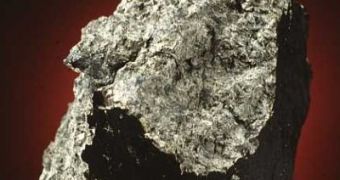Certain evidence seem to support the idea that indeed, during an early phase of Mars' past, some organic compounds formed, suggesting that life is not specific only to Earth, and could appear everywhere. In 1984, the Martian meteorite Allan Hills 84001 was found, and it was proven that it presented molecules of a substance that contained a mix of carbon and hydrogen.
The scientific community has been arguing for 23 years now about the nature of these molecules, some saying that they have formed as a result of the volcanic activity of the planet during a glaciation, while others think that they were brought on the surface of Mars by other meteorite impacts, and formed somewhere else. Either way, this implies that life could have appeared on the surface of the Red Planet, and many other places in the universe. Nevertheless, at this moment, it is more speculation than science, since we do not yet comprehend the full process that takes place during the assembly of the organic molecules, which make up a living organism.
Simple substances, such as water and carbon based gases, are considered basic organic materials, essential for the appearance of life, and can react with each other and form more complex substances. In the cold Martian environment, these substances might have been emitted during volcano eruptions, which react together to form a relatively simple organic compound.
Some scientists suggest that the similar process might have happened on Earth as well, in Norway, about one million years ago during an Arctic clime, very similar to the conditions on ancient Mars. Indeed comparison of samples taken from Allan Hills 84001 meteorite and those from Svalbard, in Norway, reveal that the forming process is identical.
Material emissions from the volcanoes rapidly cooled in the frigid Martian environment, thus trapping the mineral in the crust of the planet, meanwhile the complex organic molecules being formed. If this is the true process by which these substances form, it means that they would be quite common on other rocky planets, spread around the universe.
However, other scientists contest this scenario, by arguing that the Allan Hills 84001 meteorite actually contains too much carbon, and was contaminated during the time it spent on the Antarctic continent.

 14 DAY TRIAL //
14 DAY TRIAL //